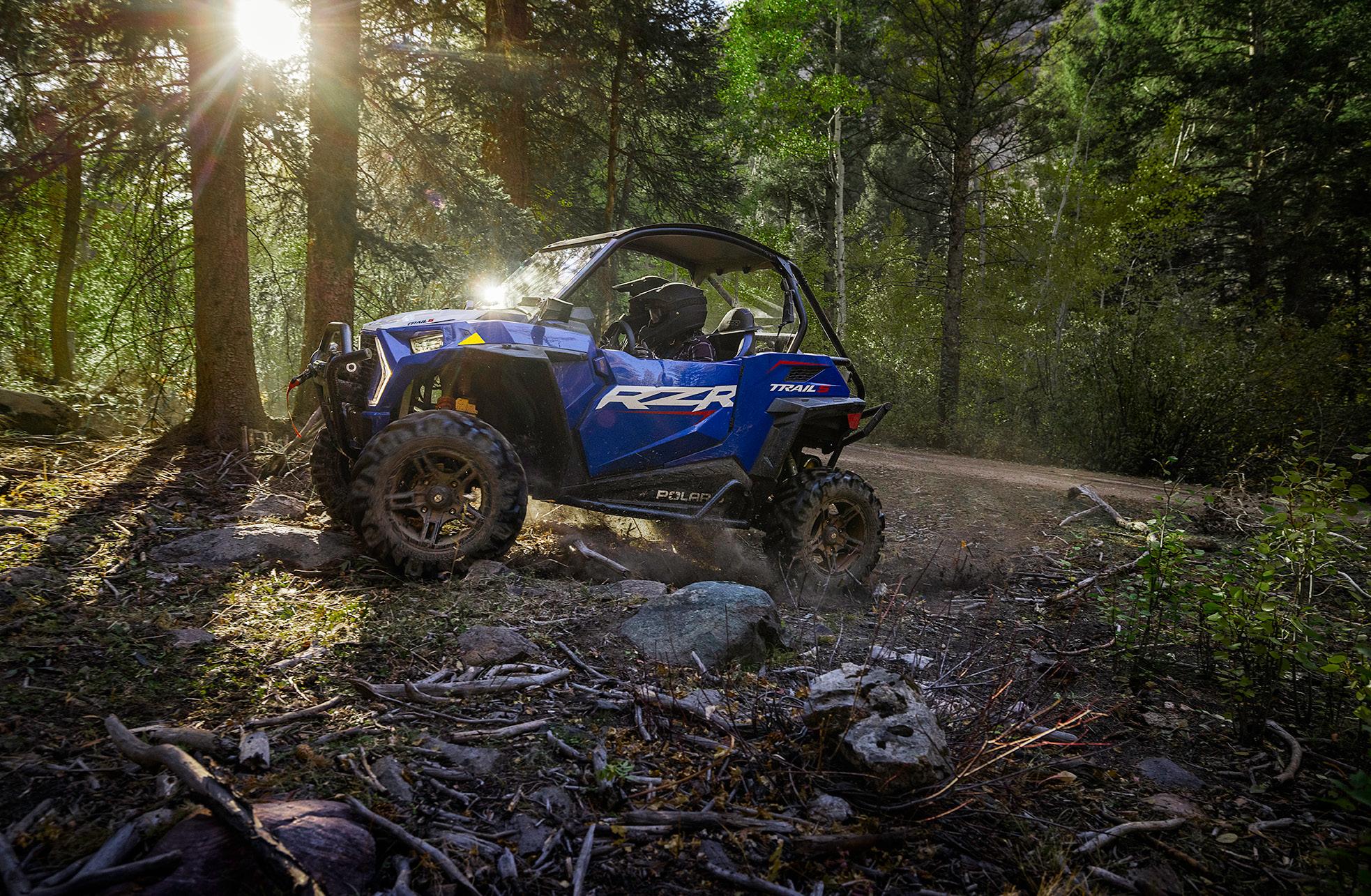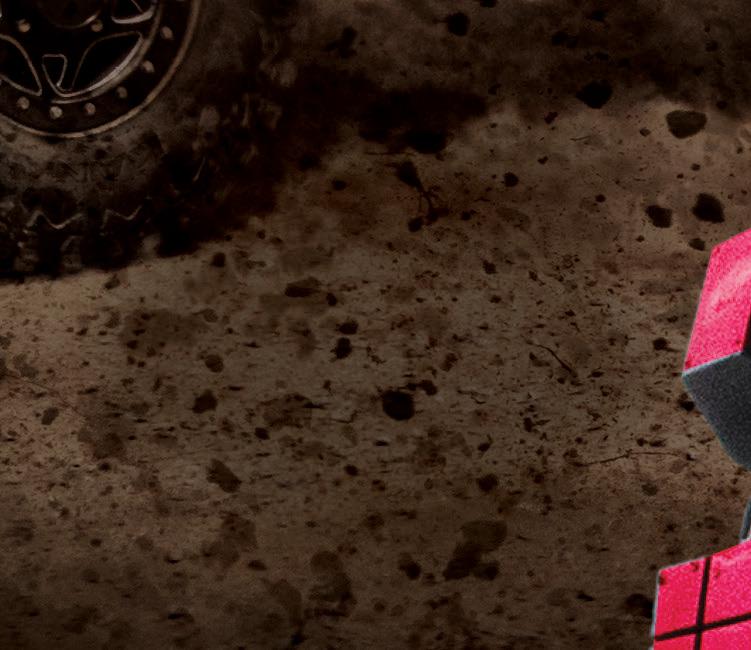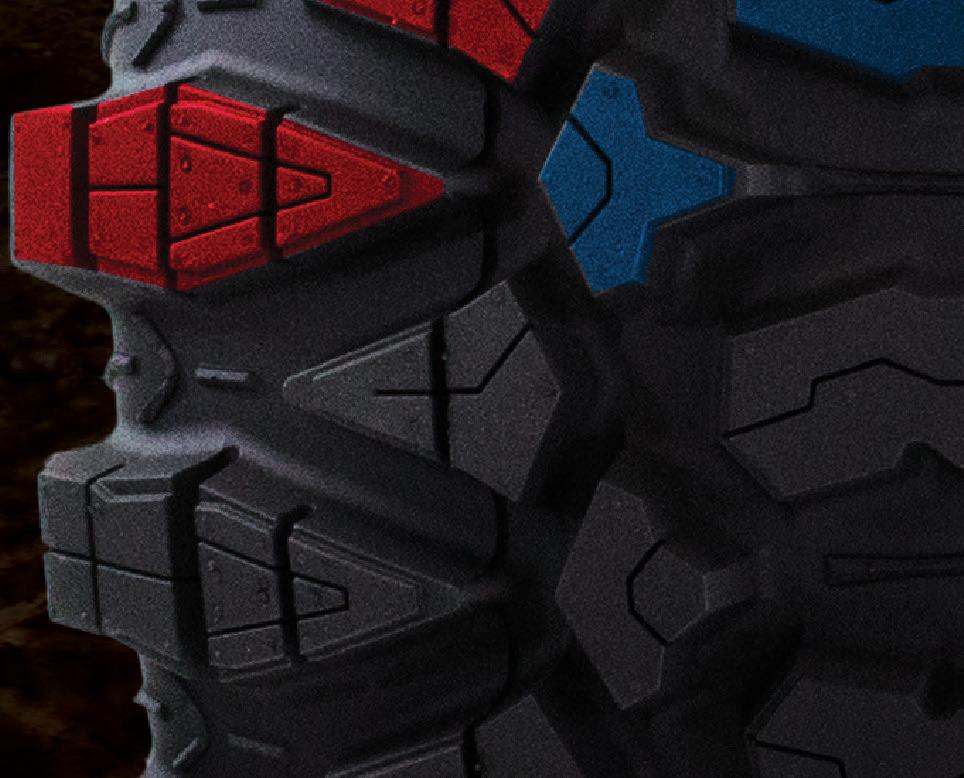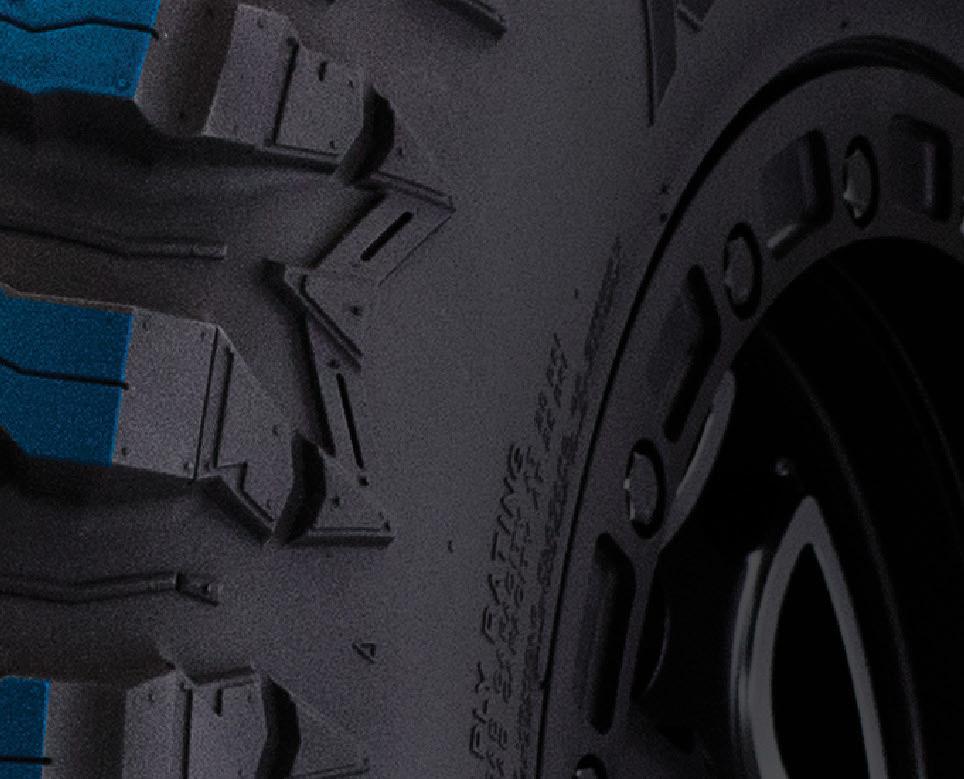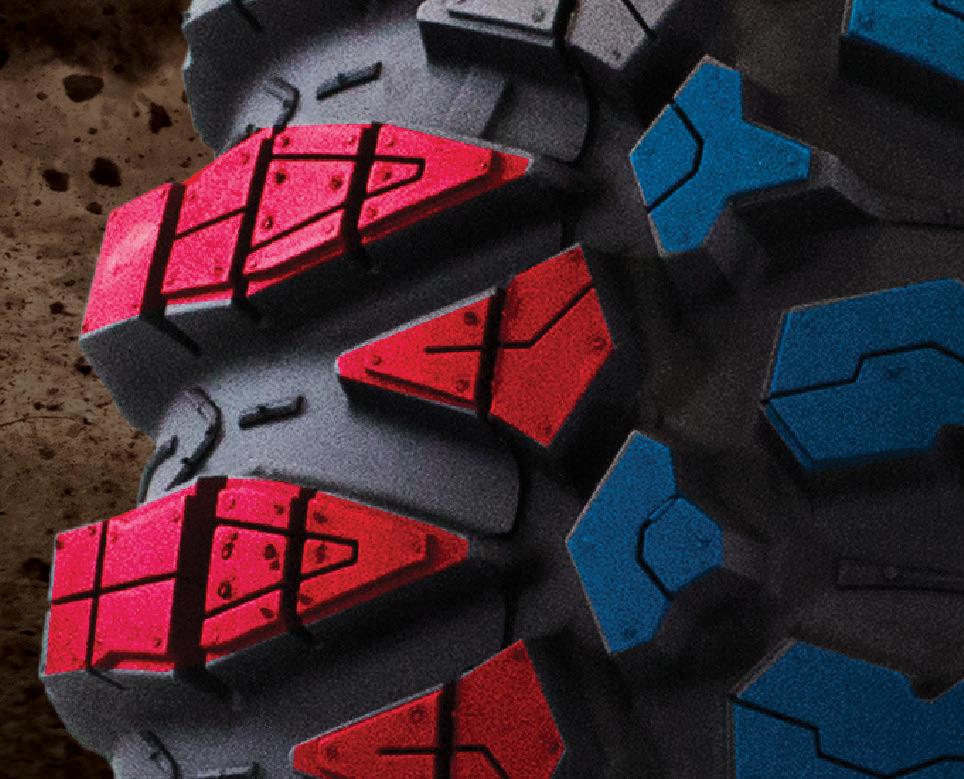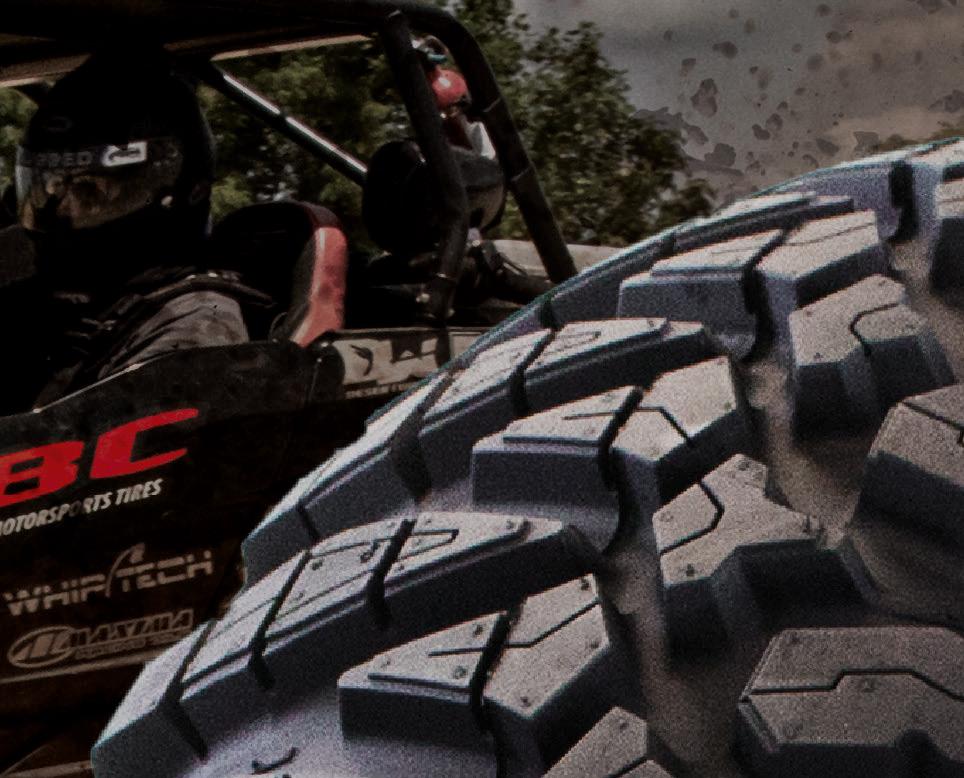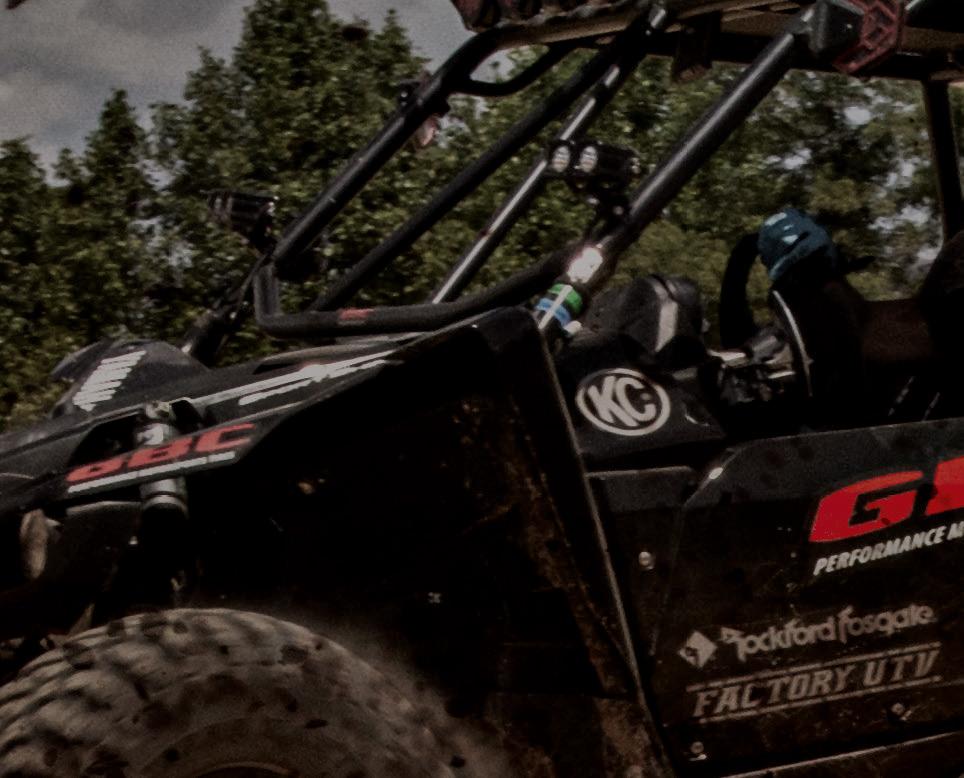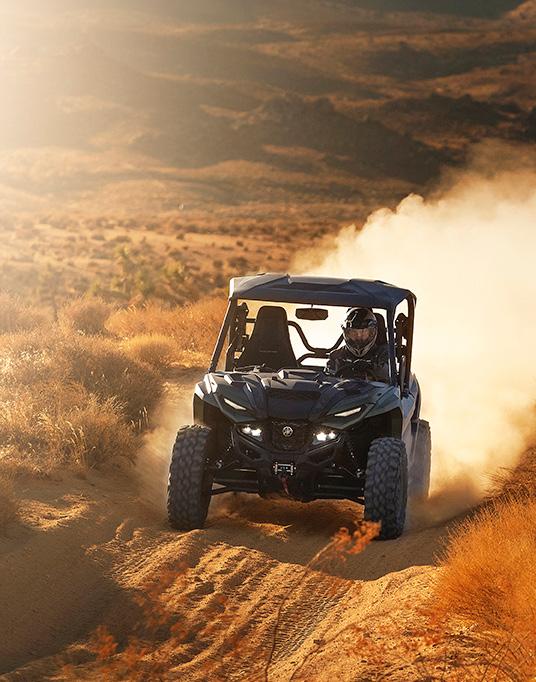
17 minute read
2021 YAMAHA WOLVERINE RMAX2 1000 XT-R
YAMAHA WOLVERIN RMAX2 1000 XT-R E
Advertisement
STORY: CODY HOOPER PHOTOS: ADAM CAMPBELL PHOTOGRAPHY
I’ll never forget the first time I saw a Yamaha UTV in the wild – it was 2004, and the legendary Rhino 660 had just hit the market. My father and I were riding dirt bikes up in the hills in Gorman, California, having a break on the side of the trail. A middle-aged man clad in street clothes and an open-face motorcycle helmet came flying past us on the trail at what appeared to be an extreme rate of speed for the utility cart he was driving. Pardon my description, but before this, all we had seen in these hills as far as UTVs go were Mules, Rangers, and other yard equipment. This thing was going triple the speed any of those tractors could manage, and the driver had an ear-toear grin as he passed us. We geared back up hastily and chased him down, finally cornering him for a little Q&A about his mystery machine. Little did we know at that time just how big the UTV movement would become, and how important that Rhino would be in shaping its future.
While Yamaha’s Rhino nameplate was unfortunately discontinued years back, the Viking and Wolverine have carried the torch well. The Rhino’s ethos was simple: do everything a UTV can do, do it well, and make it fun for the driver. With the introduction of the Wolverine RMAX2, Yamaha has again set their sights at delivering that experience, with two new UTVs based on the Wolverine platform. The RMAX2 and RMAX4 share a new, highoutput 1000cc parallel twin engine and bespoke suspension. We joke that the “R” in RMAX stands for Rhino (Yamaha won’t confirm), but the bottom line is this: Yamaha has big shoes to fill here, as not only does the RMAX carry Yamaha into the next generation of sport/utility UTVs, but it also has some very stiff competition!
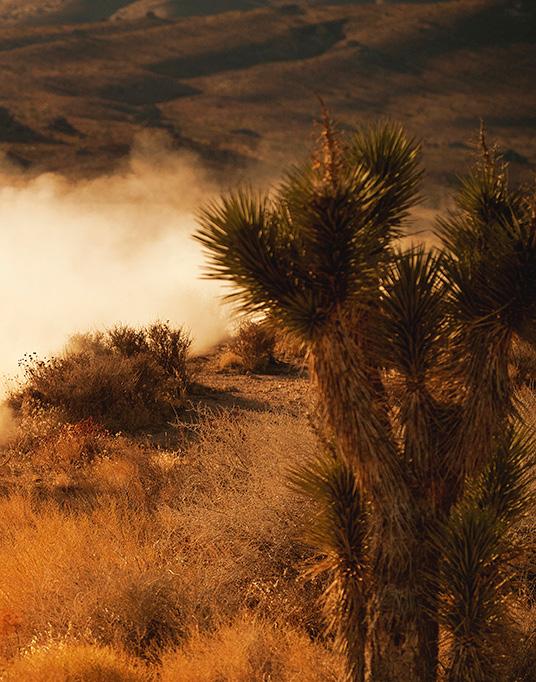
ENGINE
Like the Wolverine 850, the RMAX also gets its motivation from a parallel twin-cylinder engine with dual overhead cams and four valves per cylinder. The engines share some design elements, but are worlds apart in terms of how they’re built. The RMAX engine uses a shorter stroke than the Wolverine 850, but a much larger bore. The Wolverine RMAX 1000’s engine produces around 40 more horsepower than the 850, and utilizes Yamaha’s all-new Ultramatic transmission. The engine is strong, snappy, and perfectly happy hauling the RMAX around at speed.
The RMAX2 and RMAX4 also have Yamaha D-Mode throttle control, which is an adjustable ECU mapping program that affects how the vehicle responds to throttle inputs. It also changes the way power is fed in, creating very differentfeeling profiles for each of its three modes. We saw 71 MPH in dirt, a healthy top speed and plenty for the sport/ute segment. Others have claimed even higher. Yamaha gave the RMAX a massive power jump from the Wolverine 850, and it is much appreciated out on the trail!
TRANSMISSION/ DRIVETRAIN
Yamaha’s newest iteration of the Ultramatic CVT transmission uses much beefier parts than the smaller Wolverine X2/X4 does. The clutches themselves are dimensionally larger and feature upgraded sheaves, tuning, and bracing for longer life with the RMAX’s uprated power output. Yamaha is proud of the design achievements they have made with the Ultramatic transmission, and are now offering the industry’s ONLY 10-year-belt warranty. It applies to all Assembled in the USA 2019 & UP models with the Ultramatic transmission. To see if your UTV is on the list, visit this link.
The Wolverine RMAX features on-demand 4WD and a full diff-lock mode for when you really need it. As with all other Yamaha products,the driveline is tight, strong, and works when you need it to. No fancy electronic wizardry here – just good ol’ fashioned 4WD!
SUSPENSION
Starting with a form of the base Wolverine’s frame, Yamaha added the bracing and support necessary to cope with the increase in power, speed, tire size, weight, suspension travel, and velocity. The Wolverine 850’s trail-duty suspension was ditched in favor of a much more substantial package. All-new suspension components were designed and tested, so this isn’t just a Wolverine 850 with a long-travel kit!
Up front, the double-wishbone suspension produces a healthy 14.2 inches of travel, right on par with best-in class and only a couple inches shy of most pure-sport UTV units. They are linked by an anti-sway bar, and controlled by Fox 2.0” Podium QS3 shocks. We appreciate the easy adjustment of the QS3 shocks, and they work well for the intended audience here. If you’re the type that prefers clickers, there are a ton of aftermarket suspension shops that offer solutions for you. Regardless, the suspension is excellently tuned, with light spring rates to keep the ride plush and enough valving to keep it from bottoming.
The rear suspension again employs an independent, double wishbone design, but it cycles a very long 16.9 inches of wheel travel. This is nearly 3 inches more suspension travel than the Polaris General XP 1000, which is the RMAX2’s closest rival. It’s also 7.6 inches more suspension travel than the Wolverine 850 X2, the vehicle it shares its core DNA with. Yamaha chose not to utilize a rear swaybar on the RMAX2, leaving room for the aftermarket to offer upgrades for owners who may add weight to their rigs. In stock trim, the RMAX2 handles very well.
TIRES/WHEELS/BRAKES
Base model Wolverine RMAX models ride on 30x10-14 GBC Dirt Commander 2.0 tires, not a bad choice for an OEM tire. Checking the box
Highlights:
• Strong engine, power everywhere • Smooth CVT, great belt life • Plush, long-travel suspension • Comfortable for work or play

for the XT-R model gets you bronze wheels and Maxxis Carnivore tires. While they’re the same size as the Dirt Commanders, the Carnivores are better suited for the muddy, rocky, slick terrain that the Wolverine RMAX was really made for. Sadly, the XT-R does not get beadlock wheels, although they do resemble a beadlock from afar. Brakes are strong and have good pedal feel, with 255mm rotors up front and 244.5mm rotors in the rear. All four corners have dual-piston calipers and stainless steel braided brake lines for optimal pedal feel and braking performance.

INTERIOR & EXTERIOR
The Wolverine RMAX models get a significant facelift from the Wolverine 850 X2 and X4 models also on sale. They are so visually different, in fact, that Yamaha could have dropped “Wolverine” from the RMAX’s name completely and no one would have questioned it. A taller hood features an almost-sealed compartment that houses all of the relays, electronic access for switches and accessories, the battery, the airbox, and more. It stays relatively clean, even in heavy mud. Kudos to Yamaha for that.
In typical Yamaha fashion, all of the interior and exterior pieces are finished very nicely and bolt together extremely well. Fit & finish is a Yamaha hallmark – the RMAX even features padded areas where a rider’s knees make contact with the interior trim. The permanent side bolsters may be a little cramped for riders on the larger side, but they add a layer of security and protection that even a window net can’t offer.
The seats in the RMAX are wonderfully bolstered without being too difficult to get in and out of, and the ergonomics of the interior are spot-on. The tilt steering wheel and beefy passenger grab bar feel high-quality and strong. The dash on lower-trim models features a lidded compartment on the center stack, where on the XT-R and up trims you get a dash-mounted Yamaha Adventure Pro tablet. The Adventure Pro is a fully-functional tablet that comes pre-
stocked with vehicle diagnostic readouts, adjustable gauges, GPS capability, custom trail mapping and sharing, and much more. It’s a wonderful system that we spend a lot of time with in other Yamaha models.
The exterior trim of the new Wolverine RMAX is aggressive, with a sporty look made much more real by the massive suspension and tire combo that Yamaha stuffed under the fenders. LED marker lights and separate low/high beam LED assemblies offer much better lighting than any other Yamaha UTV on the market. We hope to see a system like this on next year’s YXZ!
The RMAX2’s tilting dump bed can hold up to 600 pounds, matching the General for bestin-class. The dump bed tilt mechanism functions well and is easy to operate, even when the machine is loaded down. The cargo box is also fairly massive, and includes molded channels for separators to keep your gear secure. Multiple tie-down locations make strapping things in easy, and Yamaha also offers some accessory bed gear for even more storage.

IMPRESSIONS
With the Rhino and Wolverine X2 comparisons out of the way, let’s get right to it: the RMAX2 is a flat-out performer. From the moment you stab the throttle for the first time, the evolutionary leap from Yamaha’s previous platforms is immediately noticeable. The RMAX produces big grunt down low, and the power grows the longer you hold your foot in it. The 1000cc parallel twin produces a very linear power curve with lots of meat in the middle, which is where the RMAX really spends most of its time.
Transmission performance is on par with perfect as well. When matted from a dead stop, the Wolverine grunts for about a half-second and then roars in RPM, immediately settling into its clutching engine speed and putting its 100+ horsepower to the ground in a hurry. Yamaha’s Ultramatic is smooth, doesn’t slip, and provides real engine braking that is useful in the dirt.
Yamaha didn’t cut any corners with the RMAX’s suspension, and it is one of the defining characteristics of this vehicle. It truly delivers the ride compliance of a long-travel sport UTV in most scenarios, but can still back up to a trailer and tow 2,000 lbs. A lot of time went in to tuning this chassis, and it is noticeable. While the RMAX does dive and squat a lot, it does so with poise, letting you get a real feel for the momentum of the car and how much traction you have left. It speaks to the driver well in fast-paced situations, although the steering is a bit overboosted and numb at speed.
This is the first Yamaha UTV besides the YXZ to have a top speed above the 50 mph range, and the RMAX handles it well. The built-in winch and other convenience features are icing on the cake here, only making the RMAX a more appealing purchase. Sport/Utility UTVs like this one are getting so capable that the lines continue to blur.
Our testers loved the RMAX for its capability and comfort, proving that for most UTV owners, one rig can really accomplish a lot. The RMAX is an ideal candidate for anyone who uses their UTV at home or at work for chores, but still wants all of the trail capability a sport UTV offers. It will work as hard as you need it to all week, and carry your cooler and camping gear when it’s time to relax on the weekend. The RMAX is the next generation of Yamaha’s Recreation-focused UTVs, and it is a knockout.

ENGINE & DRIVETRAIN
ENGINE TYPE
COOLING FUEL SYSTEM DRIVE SYSTEM DRIVETRAIN
POWER STEERING 999cc: 108 (EST) hp, 4-Stroke, DOHC, 4 valve per cylinder parallel twin Liquid Yamaha Fuel Injection (YFI) with dual 48mm throttle bodies Ultramatic V-belt with all-wheel engine braking; L/H/N/R On-Command 3-way locking differential; 2WD, 4WD, full diff-lock 4WD
Electronic Power Steering (EPS)
STEERING & SUSPENSION
FRONT SUSPENSION Independent Double Wishbone with sway bar, 14.2” Travel
FRONT SHOCKS Fox Podium 2.0 QS3
FRONT WHEEL TRAVEL ---
REAR SUSPENSION Independent Double Wishbone, 16.9” Travel
REAR SHOCKS Fox Podium 2.0 QS3
REAR WHEEL TRAVEL ---
TRACK FRONT/REAR ---
FRONT BRAKES Dual Hydraulic Disc
REAR BRAKES Dual Hydraulic Disc
FRONT TIRES / REAR TIRES 30 x 10R-14; Maxxis Carnivore
WHEELS Cast Aluminum
DIMENSIONS
OVERALL L x W x H
WHEELBASE
GROUND CLEARANCE
WET WEIGHT
CARGO BOX CAPACITY
TOWING CAPACITY
FUEL CAPACITY 119.3 x 66.1 x 77.8 in 86.7 in 13.8 in 1,876.1 lb 600 lb Rear Dumping Box 2,000 lb 9.2 gal

TURES
INSTRUMENTATION
LIGHTING WINCH OTHER STANDARD FEATURES
WARRANTY Full digital display in binnacle behind steering wheel, Yamaha Adventure Pro digital gauges in center dash, GPS, breadcrumbs, on-board diagnostics, etc. LED interior lighting, LED Headlight w/ Accent & LED Taillights --XT-R Package includes Maxxis Carnivore 30x10R-14 Tires, heavy duty onboard WARN Winch, uprated suspension components and unique colorways. 6-month Limited Factory Warranty, Yamaha 10-year Belt Warranty, optional extended plans may be available through your dealer
MSRP: Starting at $19,799; As Equipped $21,999 (XT-R)
www.yamahamotorsports.com
SUBSCRIBE ONLINE FOR YOUR TO UTV OFF-ROAD MAGAZINE WWW.UTVOFFROADMAG.COM FREE DIGITAL SUBSCRIPTION!
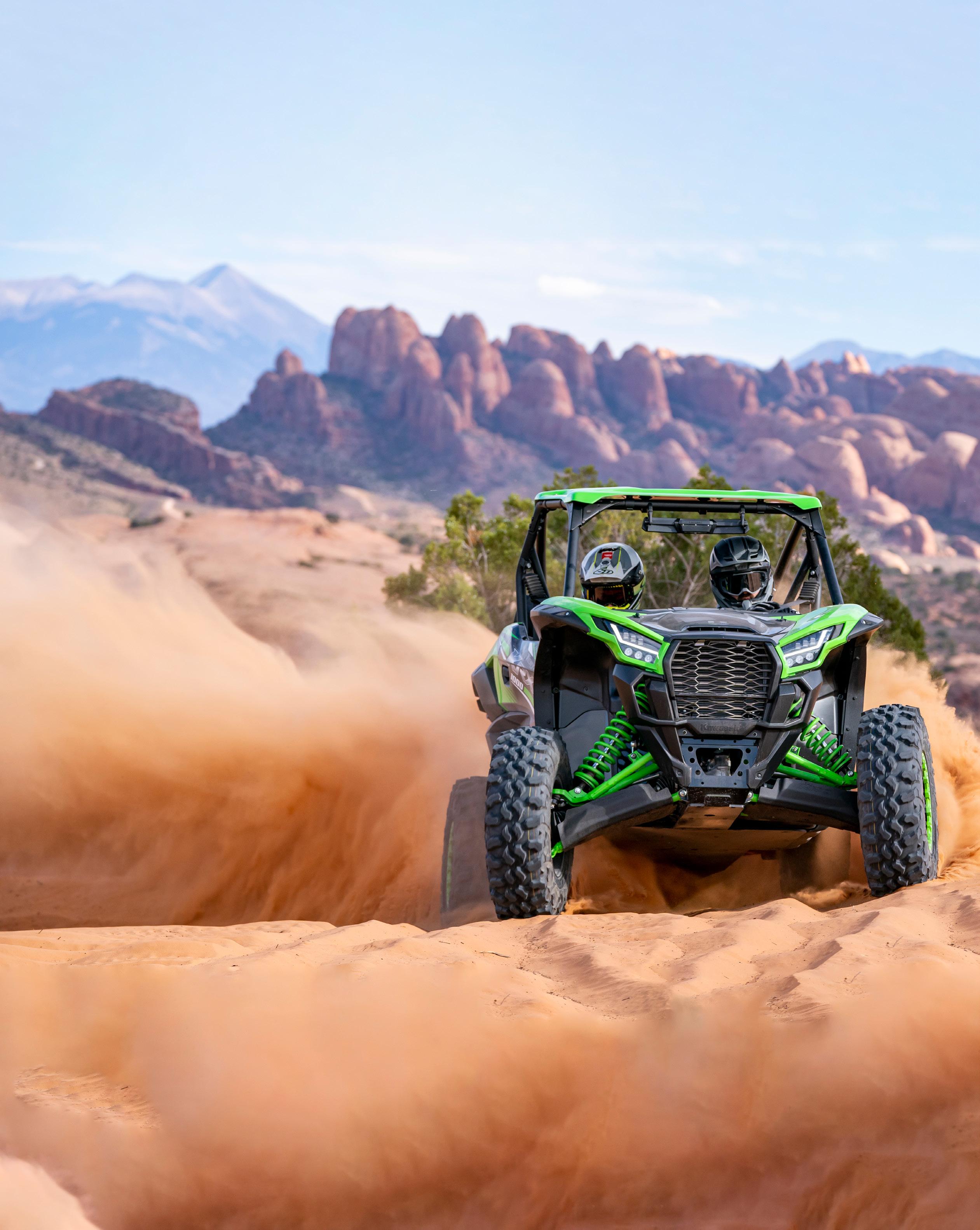
SUBSCRIBE ONLINE AT UTVOFFROADMAG.COM AND HAVE THE LATEST ISSUE SENT DIRECTLY TO YOUR PHONE, TABLET OR COMPUTER.


Elevated Comfort & Tech Features For Model Year 2021
STORY: STAFF OF UTV OFF-ROAD MAGAZINE PHOTOS: PROVIDED BY POLARIS

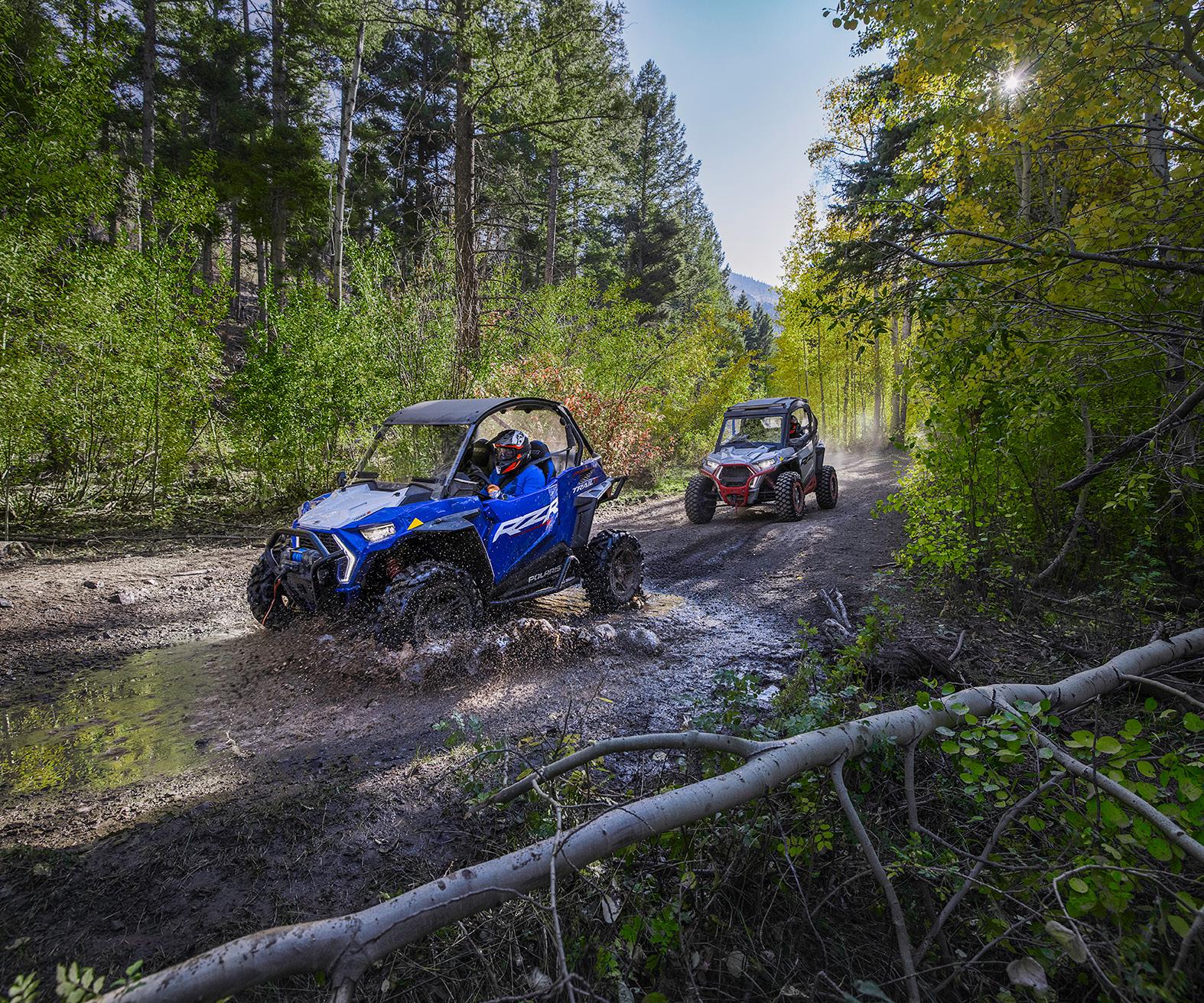
In 2007, Polaris started a recreation sport side-byside market with the launch of the Polaris RANGER RZR 800. Since then, Polaris has led the way in trail performance and remained the market leader of the trail segment.
For 2021, Polaris Off-Road introduces the updated RZR Trail and Trail S lineup. Offering all-new styling, leading trail capability, improved rider comfort and unmatched off-road technology in both the 50” RZR Trail and 60” RZR Trail S models.
The RZR Trail and Trail S models feature all-new styling and have a narrow stance and the shortest wheelbase, making it easier for riders to maneuver on twisting trails and windy routes. Pair that with class-leading power-to-weight, turning radius and fast engaging all-wheel drive, riders will be able to quickly accelerate between corners and choose their line around obstacles for the most agile trail ride ever.
On top of designing one of the most capable trail vehicles, Polaris Off-Road has further refined rider comfort with a new adjustable steering wheel position that repositions rider posture to have shoulders comfortably back against the seat. Keep trail debris out of the cab with new, sturdy full doors and receive more rear coverage from the factory with the new wrap-around roll cage. Add best-in-class suspension travel and ground clearance to soak up the bumps for a plush ride, and RZR Trail and Trail S make the last mile feel as comfortable as the first.
RZR TRAIL

The 50” RZR Trail lineup is powered by the 75 HP ProStar® 900 4-Stroke, DOHC, Twin Cylinder EFI engine, equipped with Engine Braking System (EBS). The chassis of the RZR Trail lineup shares a 79” wheelbase, 50” width, with up to 11” of ground clearance with suspension adjustment achieved by the 26” tires and 10” of suspension travel front and rear. It is also equipped with a 1.25” hitch receiver with a 1,500 LB rating. Available in three different trims: RZR Trail Sport ($13,999), RZR Trail Premium ($15,499) and RZR Trail Ultimate ($16,999). RZR Trail Sport Features: Full Doors, Steel Rims, Halogen Headlights, ZF Twin Tube Shocks, Dual-Analog Display, 3-Position Polaris PULSE Bar RZR Trail Premium Features: Electronic Power Steering, LED Headlights & Accent Lights, Aluminum Rims, Faster Steering, High Performance True On-Demand AWD, Color Matched Seats RZR Trail Ultimate Features: Ride Command, Rockford Fosgate Audio, Poly Roof, VersaTrac Turf Mode, FOX® 2.0 Podium X Shocks.
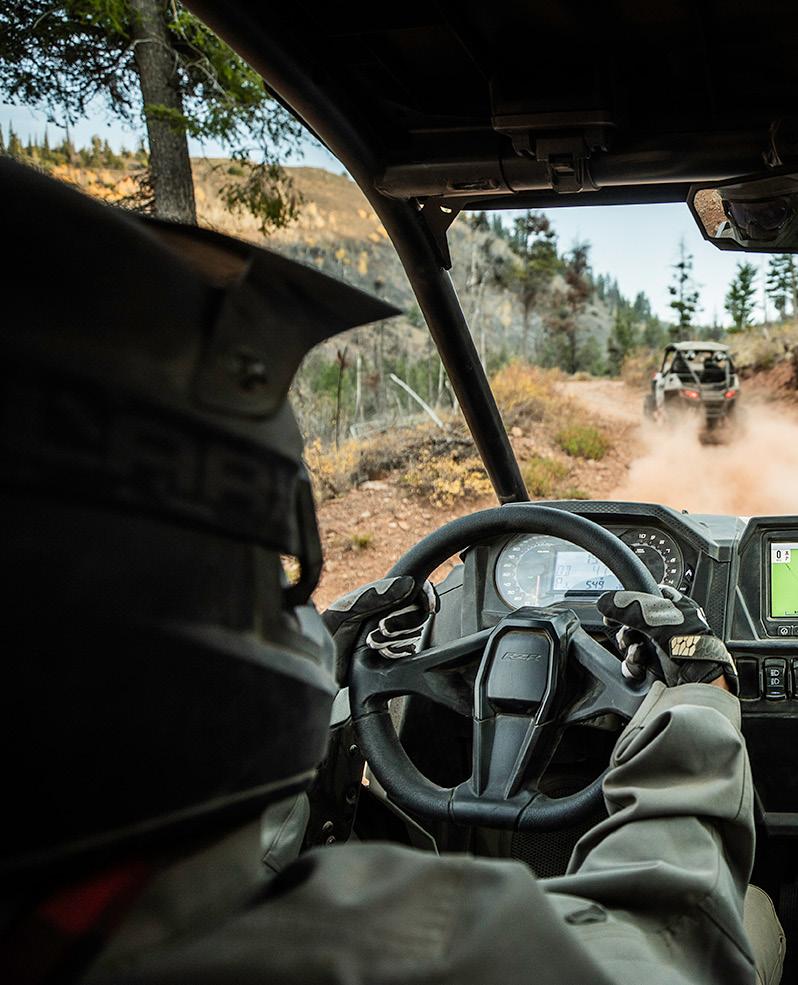
Polaris is now offering the most advanced off-road technology to the trail segment. Ride Command is an integrated, seven-inch glove-touch display that offers access to features like maps to help discover new trails, GPS to support navigation and Group Ride so your crew can stay connected and out of each other’s dust. RZR Trail and Trail S also offer the first-ever factory audio from Rockford Fosgate® for this segment, allowing riders to easily share and enjoy music on the trail. To keep the ride going, the new LED headlights and accent lights will light up the trail even after the sun sets.
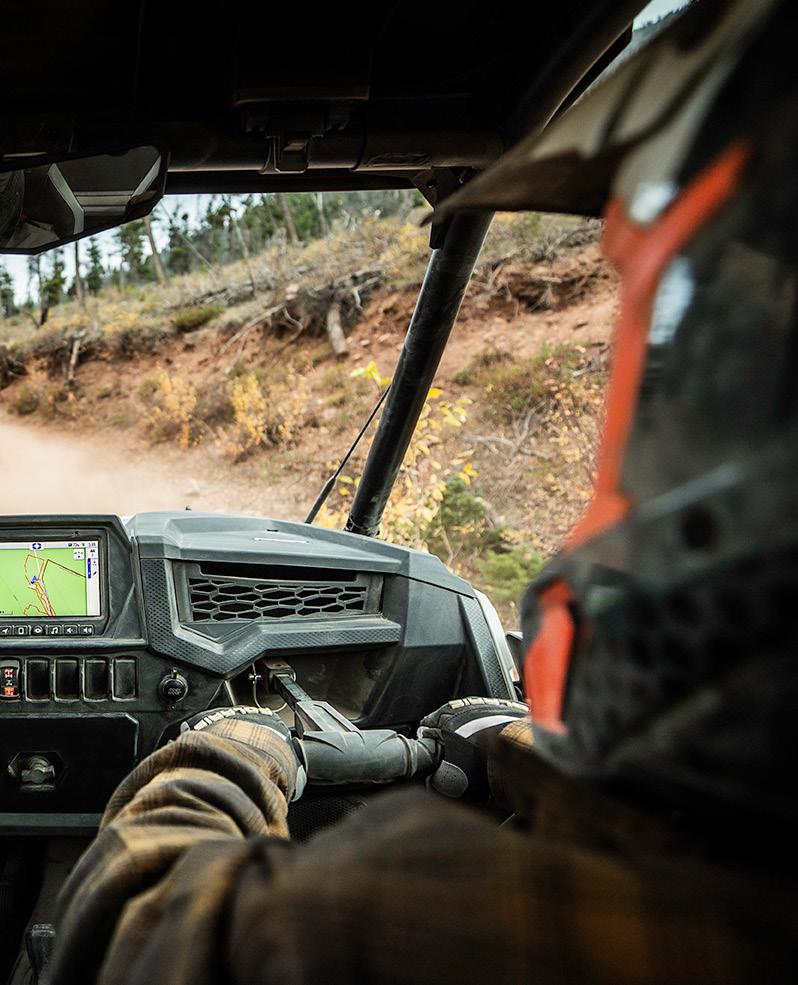
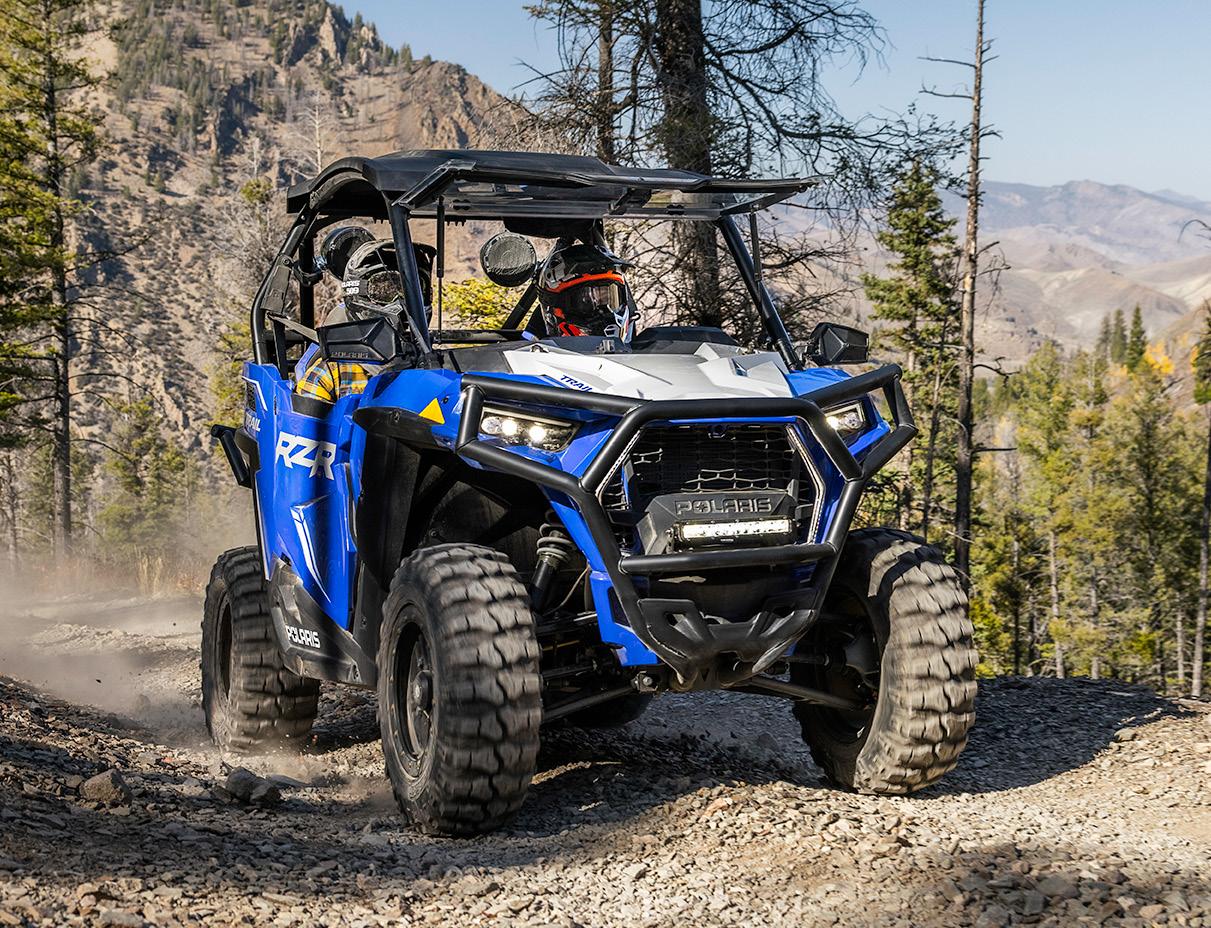
The 60” RZR Trail S has two power options: the Trail S 900 Sport is powered by a 75 HP ProStar 900 4-Stroke DOHC Twin Cylinder EFI engine, while the RZR Trail S 1000 Premium and Ultimate trims are powered by the 100 HP ProStar 1000 4-Stroke DOHC Twin Cylinder EFI engine. All three models are also equipped with Engine Braking System (EBS). The chassis of the RZR Trail S shares a 79” wheelbase, 60” width, with 12.5” of ground clearance achieved by the 27” tires and 12.25” F/13.2” R of suspension travel. It is also equipped with a 1.25” hitch receiver with a 1,500 LB rating. Available in three different trims: RZR Trail S 900 Sport ($15,299), RZR Trail S 1000 Premium ($17,299) and RZR Trail S 1000 Ultimate ($18,999). RZR TRAIL S 900 SPORT FEATURES: Full Doors, Aluminum Rims, Halogen Headlights, FOX 2.0 PODIUM Shocks, Dual-Analog Display, 3-Position Polaris PULSE Bar
RZR TRAIL S 1000 PREMIUM FEATURES: Electronic Power Steering, LED Headlights & Accent Lights, 2” Walker Evans Needle Shocks, Faster Steering, High Performance True On-Demand AWD, Color Matched Seats
RZR TRAIL S 1000 ULTIMATE FEATURES: Ride Command, Rockford Fosgate Audio, Poly Roof
To ensure riders have everything needed to customize their vehicles, a lineup of 29 new accessories are also being launched for the RZR Trail and Trail S models. This brings the total accessories available for the Trail line to more than 60. New accessories were developed with updated style, customizable comfort and premium technology in mind, spanning windshields, roofs, doors, bumpers and more.
